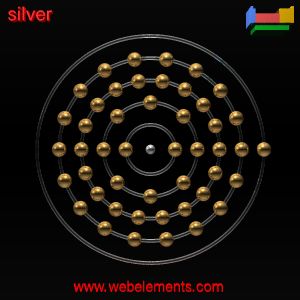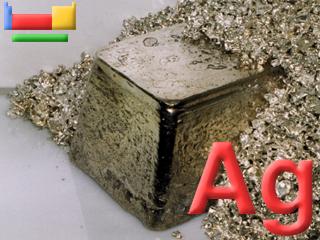

·
Silver’s date of discovery and discoverer are unknown, but
this element has been in use since ancient times
·
The name silver comes from the Old English word Seolfur 
·
The symbol for silver, Ag, comes from the Latin word argentum
·
Silver is found in ores including argentite, lead,
lead-zinc, copper, and gold, found in Mexico, Peru, and the USA
·
Pure silver has the highest electrical and thermal
conductivity of all metals, and possesses the lowest contact resistance
·
Silver is a little harder than gold and is very ductile and
malleable
·
Silver is used in the black part of negatives in filmmaking
·
Silver is frequently used to make jewelry
·
Like all transition metals in columns IB and IIB, silver is
a great conductor of electricity
·
When exposed to compounds such as Sulfur dioxide, silver
tarnishes
·
Silver is somewhat rare and expensive, but is not as
expensive as gold
·
Silver is used in solder and dental alloys
·
Silver is used for electrical connections and high capacity
batteries
· Silver is the best reflector of visible light and is used in mirror backings
![]()
|
Physical Properties |
Chemical Properties |
|
Appearance: Soft, silver metal |
Valence Number: +1 |
|
Density @ 293 K: 10.5cm3 |
Electron Configuration: 2,8,18,18,1 |
|
Melting Point: 1233.8 K |
Electronegativity: 1.93 |
|
Boiling Point: 2483 K |
1st Ionization Potential: 7.6 Volts |
|
Specific Heat: .235 J/g-1/K-1 |
2nd Ionization Potential: 21.5 Volts |
|
Heat of Vaporization: 250 kJ/mole-1 |
3rd Ionization Potential: 34.8 Volts |
|
Heat of Fusion: 11.3 kJ/mole-1 |
Max Ionization Number: 3 |
|
Electrical Conductivity: .630106 cm-1/Ohm-1 |
Min Ionization Number: 0 |
|
Thermal Conductivity: 4.29 W/cm-1/K-1 |
Number of Isotopes: 2 |
|
Atomic Radius: 144 pm |
Hydrides: none |
|
Hardness: 3.25 mohs |
Oxides: Ag2O |
|
State: Solid @ 298 K |
Chlorides: AgCl |
|
Ionic Radius: 128 pm(+1 ion), 108 pm (+2 ion), 89 pm(+3 ion)
|
|
![]()



